CHEERS | NEWS

NEWS SCOOP
What’s happening, what’s hot and who has the inside track on all forms of liquor, both local and abroad.
Click to get the inside track.

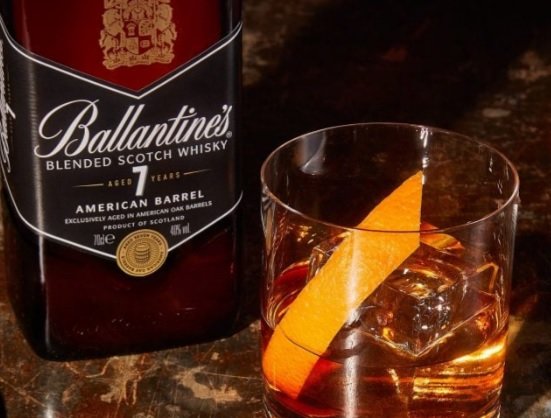

Scotch with an American accent
Ballantine’s whisky is appreciated for its complexity since it’s a blend of malt and grain whisky from two distilleries, Miltonduff and Glenburgie. It’s a smooth dram which slips down easily.

Scotch with an American accent

Ballantine’s whisky is appreciated for its complexity since it’s a blend of malt and grain whisky from two distilleries, Miltonduff and Glenburgie. It’s a smooth dram which slips down easily.
That approachability and ease of enjoyment has taken another step with the Ballantine’s American Barrel, aged 7 years, now being actively promoted on the South African market. For fans of bourbon, this is a great drop because it shows big dollops of the signature vanilla and caramel sweetness the American spirit is known for.
With its nose of toffee apple, vanilla and gentle floral aromas that are then found on the palate too, along with soft, creamy texture and delicious caramel, fudge flavour, it’s easy to see why this is appealing to such a broad audience. It has been designed to fuse the intensity of the Scotch components with the sweet palatability of bourbon.
It’s a tribute to the brand founder, George Ballantine, who was known for selling whisky that had been matured in cask for seven years in the 1870s. The significance of that is that the laws dictating a minimum ageing period for Scottish whisky had not yet been drawn up and come into effect.
The plan or concept is that this is a Scotch whisky which will appeal to bourbon drinkers, and is also sufficiently bourbon-like in character to provide a glimpse into that flavour spectrum for dyed-in-the-wool Scotch whisky drinkers. A crossover spirit, if you will.

Roaring into the 50s

Stellenbosch’s Kanonkop wine estate is recognised the world over for pinotage, cabernet sauvignon and its Paul Sauer blended red wine.
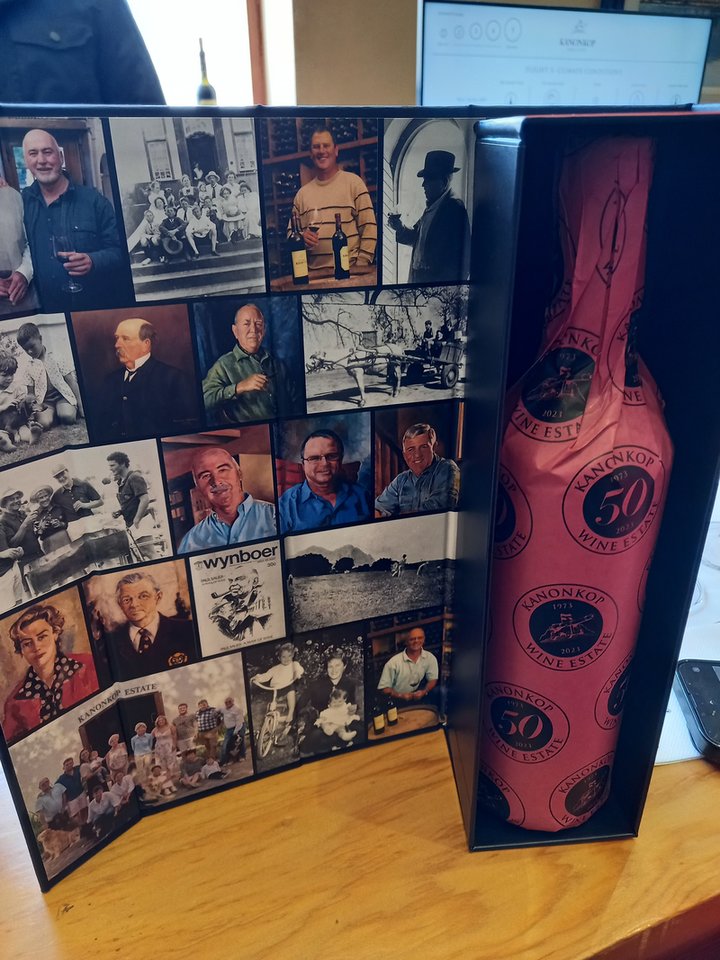
A commemorative bottling of the 2009 Kanonkop Paul Sauer boasts special packaging – and just 3 000 bottles are available
Roaring into the 50s

Stellenbosch’s Kanonkop wine estate is recognised the world over for pinotage, cabernet sauvignon and its Paul Sauer blended red wine. It’s won medals, trophies and honours galore and just two years ago was crowned the best performer overall – in the history of the International Wine & Spirit Competition.
It has achieved all this in just five decades!
As co-owner Johann Krige said at one of the many commemorations of this landmark 50th anniversary, “we just make what works well in our soils – pinotage and cabernet sauvignon, with a bit of merlot and cabernet franc for the Paul Sauer.”
The story goes that in the 1970s Kanonkop’s production went to the then Stellenbosch Farmers’ Winery (now owned by Heineken) and formed part of Chateau Libertas, but they never labelled or sold their “own” wine. However, the first ever winemaker was a young star rugby player by the name of Jan Boland Coetzee, a man who was expected to represent the Springboks against the touring British and Irish Lions in 1974. Being able to leverage a bit of marketing around that fact is what provided the impetus to go it alone in 1973 and take the plunge into selling Kanonkop wine.
Over the course of its 50 year history, Kanonkop has only ever had three winemakers: Jan Boland Coetzee, Beyers Truter and Abrie Beeslaar. That continuity and the unstinting commitment to quality and to bottling wine suited to their patch of soil, is the reason the wines are regarded as world-class.
As Krige said, quoting his grandfather Paul Sauer, “drink what you like and don’t be a wine snob!”
The good news is that they don’t intend to change.


Changing patterns
An interesting survey conducted among 20 000 consumers showed interesting switches in South African alcohol consumption patterns over the past decade.

Changing patterns

An interesting survey conducted among 20 000 consumers showed interesting switches in South African alcohol consumption patterns over the past decade.
A wine is at the top of the pile – 4th Street wine – with Savanna Dry cider in second spot, Carling Black Label beer, Brutal Fruit and Gordon’s gin rounding out the top five.
Just 10 years ago, this top five include whisky and brandy. The research, published on BizCommunity.com, was conducted by consumer analytical firm Eighty20, in an attempt to help brands understand the market and their consumers better.
Some of the biggest takeouts have been the “significant” growth in the flavoured alcohol category – which was also reflected in the demographics, with women preferring them over gin. It’s in this segment that Brutal Fruit and Flying Fish have become category leaders.
Perhaps the most interesting change has been in beer. Beer remains extremely popular as the drink of choice but where the top brews in 2013 were Castle Lager, Castle Light, Carling Black Label, Heineken and Hansa Pilsener, in 2023 that has changed significantly. Number one is Carling Black Label, followed by “other brands” (comprising independent brands and craft brews), Castle Light, Flying Fish and Heineken.


Recipe for winter
It’s often said that the sum of the parts of a blended wine should be better than its individual components – and that’s true of the latest release of Steenberg Catharina.


Recipe for winter

It’s often said that the sum of the parts of a blended wine should be better than its individual components – and that’s true of the latest release of Steenberg Catharina.
The 2020 vintage of Catharina, a blended red wine tribute to the rather remarkable woman who started Steenberg hundreds of years ago, is the 23rd to have been released.
It’s a richly textured blend of predominantly merlot (59%), cabernet sauvignon (27%) and malbec (14%). Only the cellar’s best barrels of these individual wines make it into the suave, forthright Bordeaux-style blend.
As the promotional material states: “Revealing layers of concentrated raspberry, blackcurrant and black cherry supported by a full, yet subtle texture, make Catharina 2020 the ideal winter red. The dark fruit and spice, lifting acidity and a polished tannic finish, create the optimal pairing for most red meat and rich, saucy dishes.”
Cellarmaster Elunda Basson is a fan of Steenburg Executive Chef Kerry Kilpin’s ricotta and herb stuffed neck of lamb, saying it does a fantastic job of highlighting the merlot in the blend – so here’s the recipe.
Lamb Neck stuffed with Ricotta and Herbs with Lemon Jus
Serves 6
Ingredients
For the meat:
1kg deboned lamb neck
200g ricotta
10g chopped basil
10g chopped parsley
Zest of 1 lemon
1 onion chopped
1 carrot chopped
1 stick celery chopped
For the jus:
1 litre stock
1 lemon, juiced and zested
100g butter
Salt and pepper
Method:
- In a food processor combine the ricotta, herbs and lemon zest, season with salt and pepper.
- Open the neck up and season with salt and pepper on the inside and out. Lay the neck “skin” side down and spread the filling over the entire surface of the meat. Roll up like a Swiss roll and secure the meat by tying it with butcher’s string.
- Prepare a roasting tin with the chopped vegetables and stock. Lay the lamb neck on top of the vegetables.
- Braise in a preheated oven of 160º C for 2-3 hours or until cooked. When you place a skewer in the meat it should have no resistance.
- Once cooked remove the meat from the pan and allow to rest.
- For the jus, combine the vegetables and stock from the roasting pan and blend. Pour into a pot and bring to the boil. Add the zest, lemon juice and butter. Season with salt and pepper. Strain before serving.
Accompaniments:
200g peas
15g chopped mint
100g feta
800g butternut, cubed and roasted
To serve: Slice the lamb neck and place on the roasted butternut. Drizzle the lemon jus around and top with mint, peas and feta cheese.
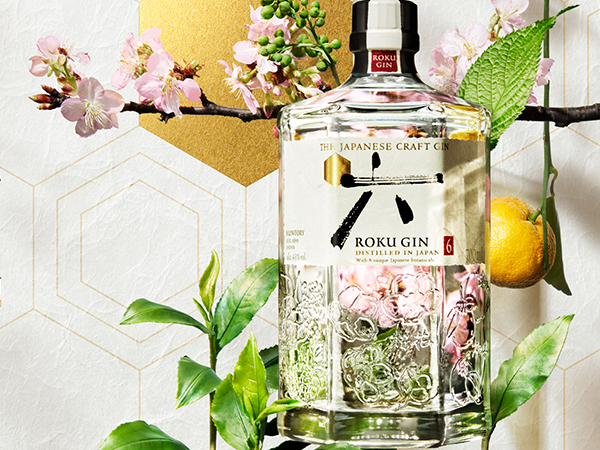
Spirit of Japan
Japanese attention to detail and craftsmanship is legendary. Many of their wooden temples have defied typhoons and earthquakes for centuries despite not having a single nail or screw used in their construction!


Spirit of Japan

Japanese attention to detail and craftsmanship is legendary. Many of their wooden temples have defied typhoons and earthquakes for centuries despite not having a single nail or screw used in their construction!
Roku gin is one of many spirits in the Beam Suntory stable but its delicacy is attributable to the level of detail involved in its making. Even the bottle is special, with its hexagonal shape representing each of the six Japanese botanicals infused, distilled and blended into the gin.
Two of these unique botanicals are from the cherry tree so revered by the Japanese: both Sakura flower and leaf are used, along with yuzu peel, Sencha tea, Gyokuro tea and Sansho pepper.
Distilled since 1936, Roku gin “was born out of a vision to create a truly authentic Japanese product to meet the international demand for a premium crafted gin with a distinctive and balance flavour”, the marketing material states.
The recommendation of how to best enjoy Roku gin is in a Japanese gin and tonic, served with ice and garnished with slices of fresh ginger.


Swartland hospitality on show
“Swartland Sosiaal is back with a bang on October 28,” declares founder and organiser Carien Hugo-Waring. “The event launched last year to a wonderful response and we’re very happy to be back, this time at one of our region’s most famous wineries.

Swartland hospitality on show

“Swartland Sosiaal is back with a bang on October 28,” declares founder and organiser Carien Hugo-Waring. “The event launched last year to a wonderful response and we’re very happy to be back, this time at one of our region’s most famous wineries.
“And before anyone asks, the event will be over long before the final kick-off of this year’s Rugby World Cup at 21h00. In fact, Swartland Sosiaal will be the perfect place to warm-up and stock-up!”
The venue for this festival of Swartland wine, hospitality, food and general love of good times, is Org de Rac, with its grand manor, lawns and veranda the hub for all activities. Attendees can make the most of the pop-up food stalls, picnics, live music and of course, the opportunity to taste the wares of the Swartland’s notoriously rip-roaring wineries with a few extras too.
Once again, tickets are limited, with just 400 available via Quiket from July 1. Only adults are permitted and tickets cost R350 per person. These include a safari-style tasting of Swartland wines, a R50 voucher towards the first wine purchase of the day as well as live entertainment by the full band of Newton & Co.
Accommodating designated drivers, Quicket has 30 special designated driver tickets for sale at R200 a head. These include a R50 voucher towards food and a bottle of water. These ticket holders will be identified by wristbands and served no alcohol.
Participating wineries include Org de Rac obviously, but also Riebeek Wine Co., Pulpit Rock, Huis van Chevallerie, Leeuwenkuil, Arbeidsgenot, Winkelshoek, Wildehurst wines, Koringberg and then Brookdale in Paarl and Deetlefs near Worcester.
For more information about Swartland Sosiaal Wynfees, email info@moorrees.co.za or interact with @SwartlandSosiaal on either Facebook or Instagram.

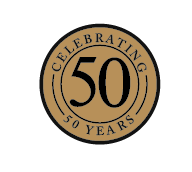
Bravo Baronne!

South Africa owes a debt of gratitude to legendary Nederburg cellarmaster Günter Brözel for coming up with the Baronne blend of cabernet sauvignon and shiraz which thousands of wine lovers have enjoyed over the past five decades.
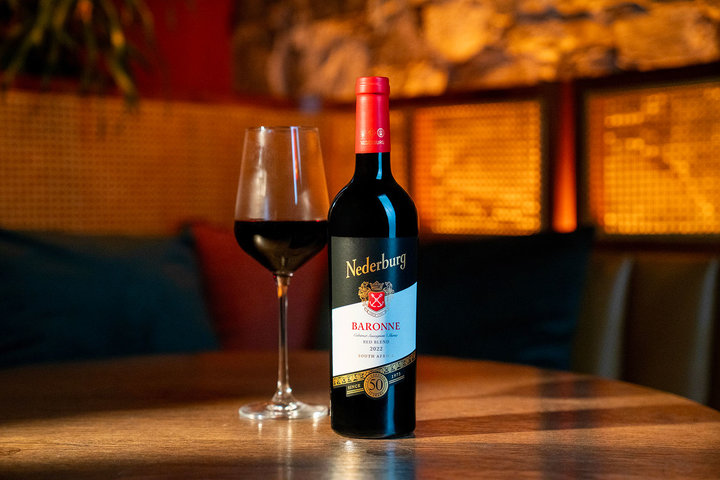
Bravo Baronne!

South Africa owes a debt of gratitude to legendary Nederburg cellarmaster Günter Brözel for coming up with the Baronne blend of cabernet sauvignon and shiraz which thousands of wine lovers have enjoyed over the past five decades.
Nederburg Baronne has just notched up its 50th anniversary, adding it to a rather short list of South African wines which can claim that honour.
Some clever marketing soul at Nederburg did the math and worked out that if you were to calculate the number of bottles of Nederburg Baronne consumed in South Africa today, it would work out to the equivalent of one bottle opened every 15 seconds!
Appreciated by both the crowds and the critics, Nederburg Baronne is enjoyed for both its longevity as well as its consistency of style and quality.
The country’s wine drinking patterns in the 1970s were quite different to what they are today. Firstly, there wasn’t much of a wine drinking culture and when people did drink wine, they preferred white.
Dry red wines which could be enjoyed every day were in short supply but Brözel hit on the idea of combining cabernet sauvignon with the spicier, fleshier and more exotic notes of shiraz. Cabernet always leads the blend but the role of shiraz in making the wine accessible and appealing should never be underestimated.
Nederburg red wine maker, Zinaschke Steyn said: “It’s an honour to maintain Günter’s vision and his tradition,” adding that she hoped in another 50 years on, Baronne would still be a favourite.

Gunter Brozel, the original creator of Baronne

World Class contender

Julian Short is good at making cocktails, and he likes drinking them too – which might be why he is a multiple winner of cocktail-making competitions, the latest being the South African Diageo World Class Bartender of the Year title.


World Class contender
Julian Short is good at making cocktails, and he likes drinking them too – which might be why he is a multiple winner of cocktail-making competitions, the latest being the South African Diageo World Class Bartender of the Year title.
It’s the second time the 31-year-old has won the title, having previously won in 2017.
Over the past 14 years, this Diageo World Class competition has trained more than 400 000 bar tenders from 60 countries.
Short pipped Ballito’s Richie Nahlaka, bar manager at Alchemy bar into second, while Johannesburg’s Maynard Booyzen, bar manager at Ethos, claimed third spot.
“I am overjoyed about winning this year,” Short said. “As you grow older, entering big competitions becomes about your ego – a lot of bartenders don’t enter World Class because they’re afraid of losing to someone younger or less experienced. This year, I told myself I was going up against myself, and I am taking that thinking through to finals in Brazil."

The South African leg of World Class saw 10 finalists completing various challenges over four days at different venues in Johannesburg, many of them under strict time pressure.
“In a competition, your cocktail needs to have a story behind it. For the food pairing challenge, I made a sour apple and ginger soda with Tanqueray 10 – tall, dry and refreshing – and carbonated on stage. I drew the savoury style of cocktail out of a hat, and made a tropical bloody Mary with Ketel One vodka, a clarified tomato, fresh granadilla and gooseberry punch, with coconut milk.” The drink was topped with a beetroot and balsamic reduction.
Short made his first international trip in 2015 to represent South Africa in a tequila bartending competition in Mexico. Since then, he has travelled the world shaking and making cocktails and exchanging skills in bars. In 2016, after working the Johannesburg bar scene, Short became head bartender and manager at Sin + Tax, purchasing the venue four years later to combine business skills with constant innovation behind the bar.
He was previously one of the South African bar industry experts involved in mentoring 100 previously disadvantaged bar staff through Diageo SA’s The Hand-Up Mentorship Programme, which aims to upskill entry level bartenders to become competitors in World Class.
“Going overseas as a young bartender for my first World Class was overwhelming. Since then I have worked at bars all around the world. I am more prepared this time around; I’m going to keep doing me and do my best.”